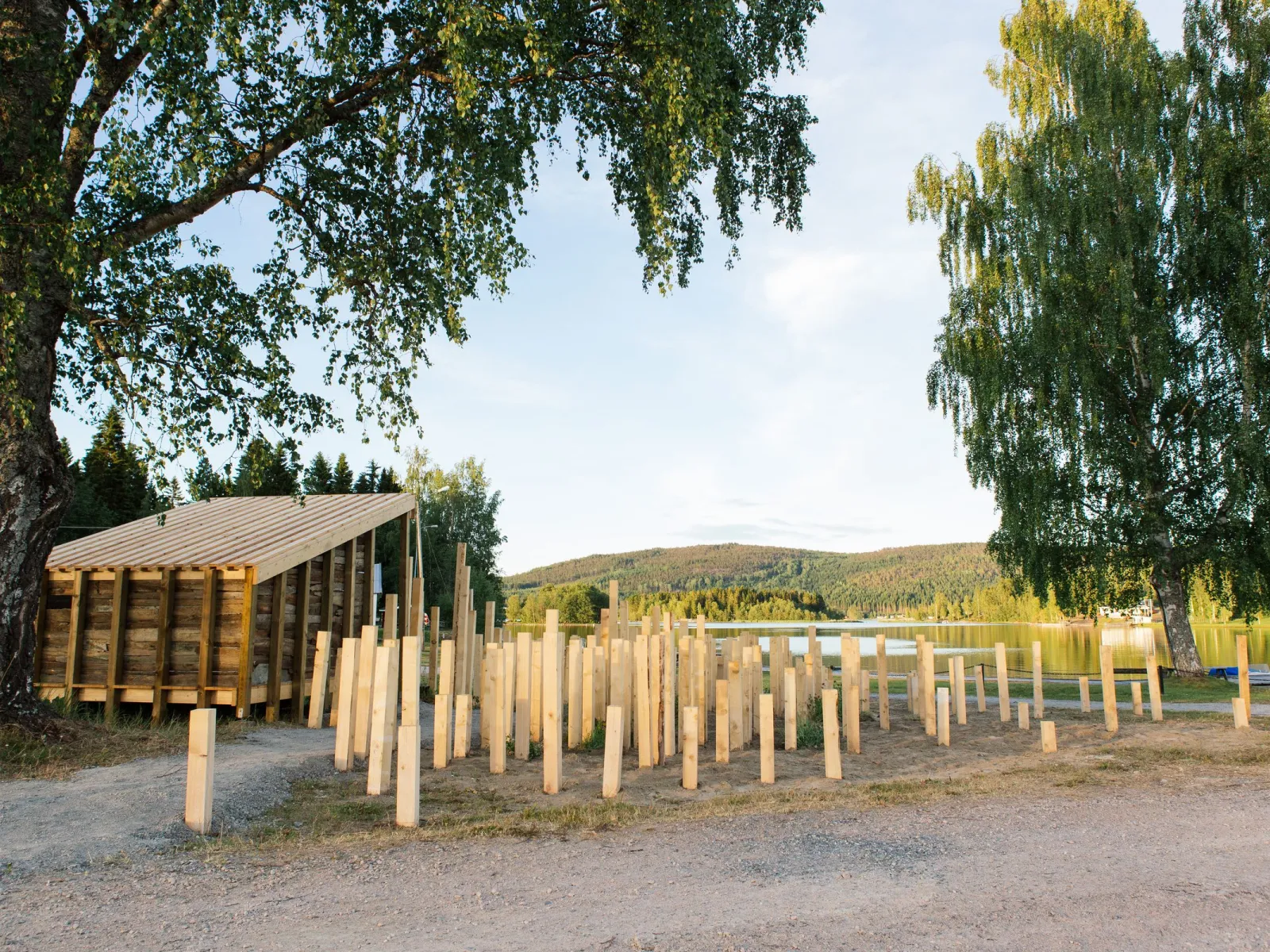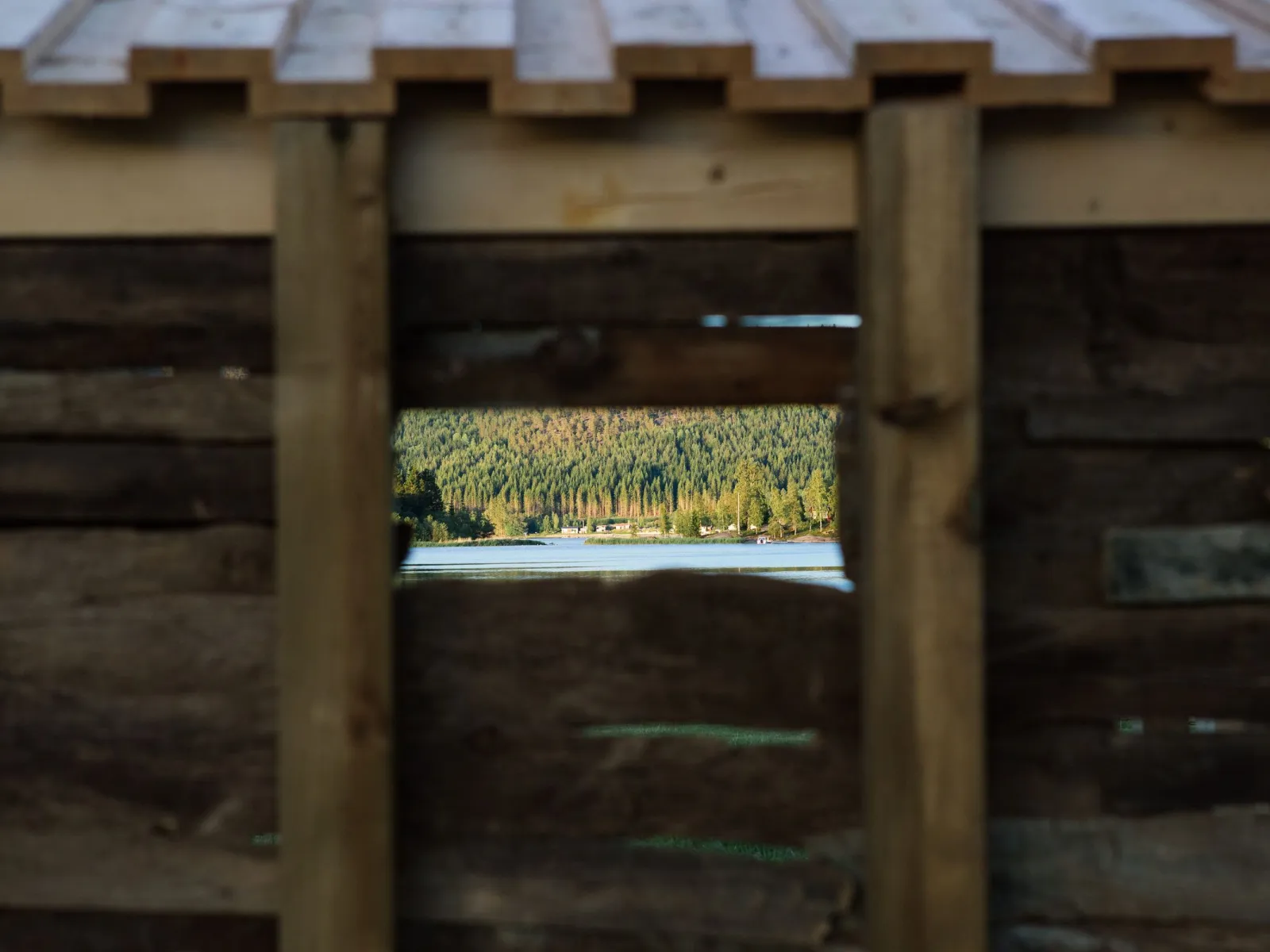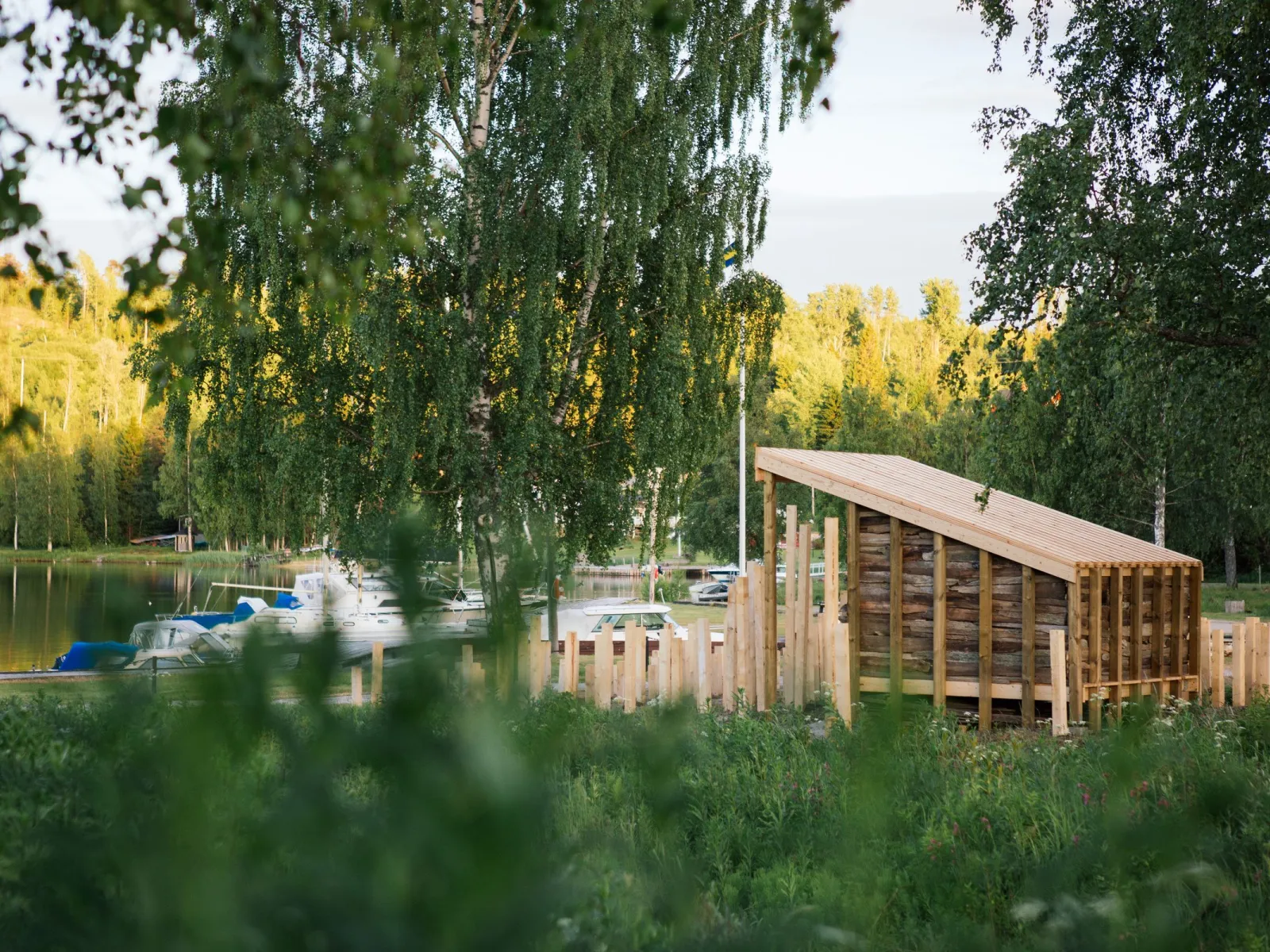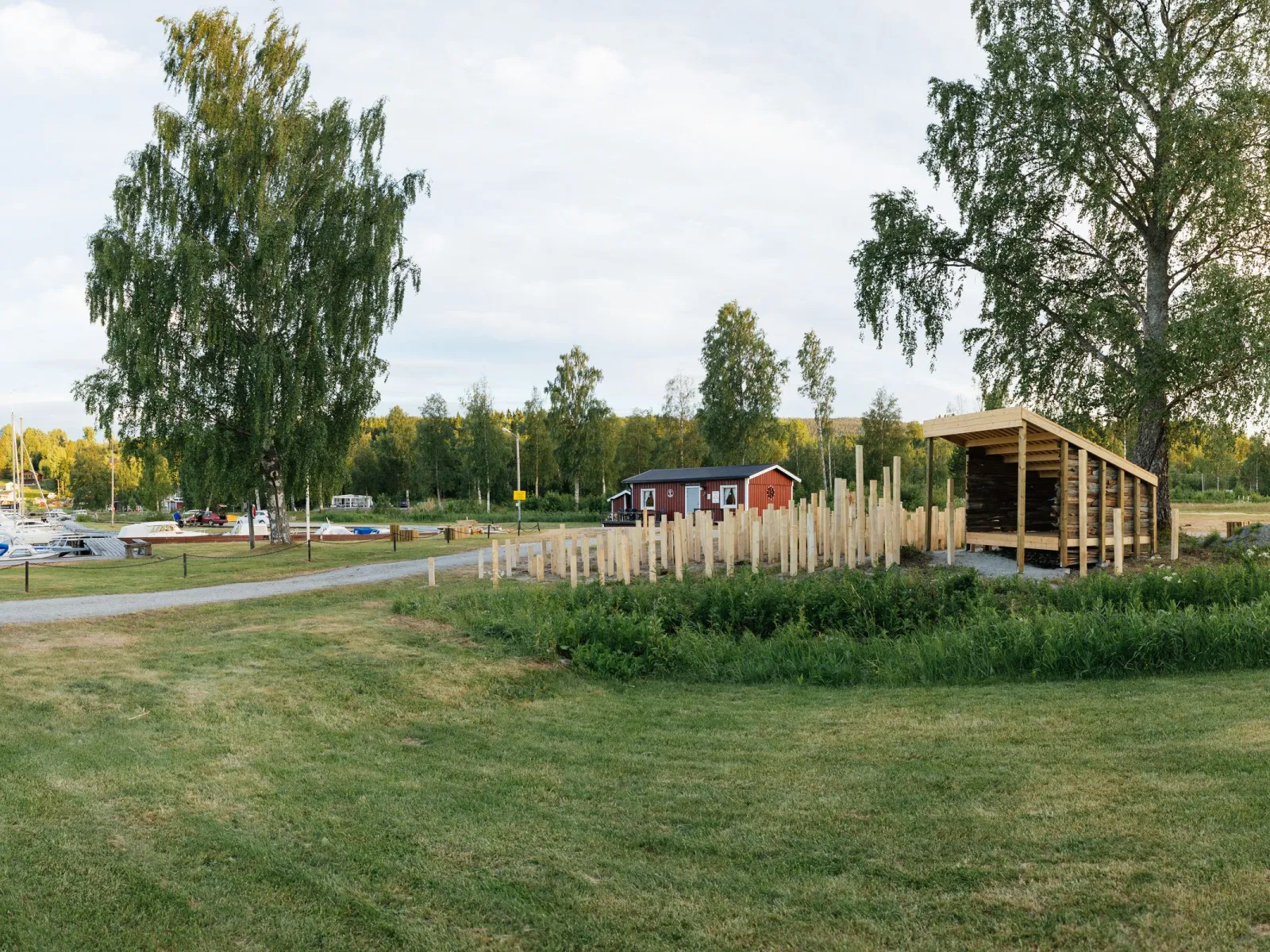Komponerar
Komponerar är en intressant skapelse av ett vindskydd som ligger mitt i båthamnen i Näske.
Kontaktinformation
Ta dig hit
- Gratis parkering
Vägbeskrivning : Komponerar ligger mitt i Näske hamn. Om du vandrar längs Höga Kusten-leden ligger vindskyddet längs etapp 6.
Beskrivning
Så här beskriver arkitekterna vindskyddet (på engelska):
"In a celebration of the true essence of the Höga Kusten, Komponerar is situated within an abstraction of the man-made, the designed, the artificial. Yet the presence of nature is unmistakable still in Näske hamn, though bordered and in a way set at a distance. Komponerar is about unifying the dispersity of Näske through an underlying noun and a story, being the designed in relation to nature. Acknowledging nature’s presence, Komponerar is under constant shifting, altering, aging, the result of an intervention utilizing and visualizing the qualities and natural cycles of reality.
The built representing the man-made and the untouched, unaltered, freed representing its counterplayer, concluded into an intervention where aging becomes beauty and connection becomes a quality. Design, recomposing in nature.
For us, just like many, Höga Kusten offers us an opportunity to reconnect with nature, perhaps in an escape from our societal abstractions. We hope that you will find some of the same beauty in our project as you, the local, the modern nomadic hiker, the other, are presumably searching for on your visit to Höga Kusten and Näske. Welcome!
Komponerar is layed out on an abstract grid, directed towards the primary circulation and also contributing to the existing art, Näskom. The poles are a direct influence of the decomposing elements from the saw mill industry ’Verket’, that closed in the beginning of 20th century. The landscape has both its story of beautifully aging as it decomposes, but at the same time restricting the access of us humans, freeing nature to intervene and grow. The cladding was retrieved from the waterline, leftovers from the industry itself, a direct connection to the sites history, but also a refined product by nature."
"In a celebration of the true essence of the Höga Kusten, Komponerar is situated within an abstraction of the man-made, the designed, the artificial. Yet the presence of nature is unmistakable still in Näske hamn, though bordered and in a way set at a distance. Komponerar is about unifying the dispersity of Näske through an underlying noun and a story, being the designed in relation to nature. Acknowledging nature’s presence, Komponerar is under constant shifting, altering, aging, the result of an intervention utilizing and visualizing the qualities and natural cycles of reality.
The built representing the man-made and the untouched, unaltered, freed representing its counterplayer, concluded into an intervention where aging becomes beauty and connection becomes a quality. Design, recomposing in nature.
For us, just like many, Höga Kusten offers us an opportunity to reconnect with nature, perhaps in an escape from our societal abstractions. We hope that you will find some of the same beauty in our project as you, the local, the modern nomadic hiker, the other, are presumably searching for on your visit to Höga Kusten and Näske. Welcome!
Komponerar is layed out on an abstract grid, directed towards the primary circulation and also contributing to the existing art, Näskom. The poles are a direct influence of the decomposing elements from the saw mill industry ’Verket’, that closed in the beginning of 20th century. The landscape has both its story of beautifully aging as it decomposes, but at the same time restricting the access of us humans, freeing nature to intervene and grow. The cladding was retrieved from the waterline, leftovers from the industry itself, a direct connection to the sites history, but also a refined product by nature."



